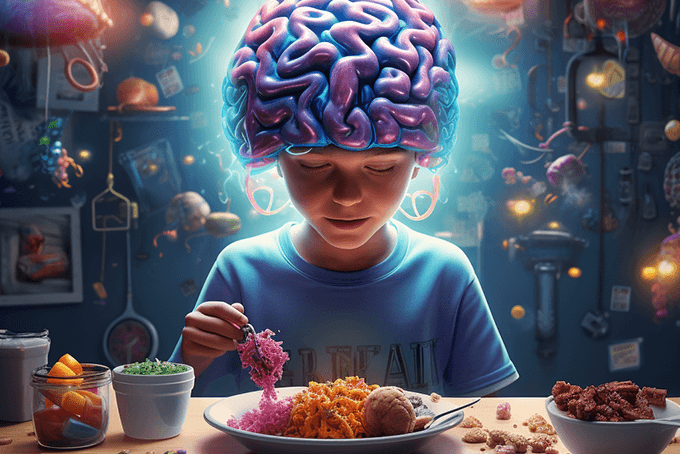Brain-Based Learning is an innovative approach to education that takes into account the way our brains naturally process and retain information. By understanding the science behind how the brain learns, educators can tap into the full potential of their students and create a more engaging and effective learning environment. In this article, we will explore the key principles of Brain-Based Learning in the classroom, strategies for implementing it in the classroom, the role of emotions in learning, overcoming challenges, and measuring its impact.
Understanding Brain-Based Learning
Before we delve into the specific strategies and techniques of Brain-Based Learning, it’s important to have a foundational understanding of the science behind it. The brain is a complex organ with numerous interconnected neural pathways that allow us to process and store information. But what exactly happens in the brain when we learn?
The Science Behind Brain-Based Learning
Brain research has shown that learning is most effective when it engages multiple areas of the brain simultaneously. When students are actively involved in the learning process, their brains are more likely to create strong neural connections, leading to better understanding and retention of information. Additionally, emotions play a crucial role in learning, as they can enhance or hinder the brain’s ability to process new information.
But how does the brain actually process and retain information? When we learn something new, such as a new concept or skill, our brain forms new neural connections. These connections, known as synapses, allow information to travel between different areas of the brain. The more we practice and reinforce these connections, the stronger they become, making it easier for us to recall and apply what we have learned.
Key Principles of Brain-Based Learning
There are several key principles that govern Brain-Based Learning. These principles are derived from scientific research and provide educators with valuable insights into how the brain learns best. One principle is the importance of making connections between new information and prior knowledge. This helps students integrate new concepts into their existing knowledge framework, making it easier to understand and remember.
Another principle is the significance of active engagement. Passive learning, such as sitting and listening to a lecture, is not as effective as hands-on, interactive activities that require students to actively manipulate and apply new information. Collaborative learning, where students work together in groups, also taps into the brain’s social nature and facilitates deeper understanding.
Furthermore, the brain thrives on novelty and variety. When learning experiences are engaging and varied, the brain is more likely to stay focused and retain information. This is why incorporating different teaching methods, such as visual aids, multimedia presentations, and real-world examples, can greatly enhance the learning experience.
Finally, Brain-Based Learning emphasizes the importance of movement and physical activity. Research has shown that physical exercise not only benefits overall brain health but also enhances cognitive functions such as attention and memory. Incorporating movement breaks, active learning games, and kinesthetic activities can help energize the brain and promote better learning outcomes.
By understanding the science behind Brain-Based Learning and applying its key principles, educators can create a learning environment that optimizes the brain’s natural processes. This approach not only enhances students’ understanding and retention of information but also fosters a love for learning and a lifelong curiosity.
Implementing Brain-Based Strategies in the Classroom
Now that we have a solid understanding of the principles behind Brain-Based Learning, let’s explore how we can translate these principles into actionable strategies for the classroom. Creating a brain-friendly environment is a key starting point.
Creating a Brain-Friendly Environment
A brain-friendly environment is one that is conducive to learning and stimulates optimal brain function. This can be achieved by ensuring the physical space is comfortable, well-lit, and free from distractions. Classroom decor can also play a role, with visuals and displays that support the learning objectives and engage students’ attention.
But what about the temperature of the classroom? Research suggests that the ideal temperature for learning is around 70 to 72 degrees Fahrenheit. When the temperature is too hot or too cold, it can negatively impact students’ ability to focus and retain information. So, it’s important for educators to consider the temperature and make adjustments if necessary to create an optimal learning environment.
In addition to the physical environment, the emotional climate of the classroom is equally important. Students thrive in an environment where they feel safe, supported, and respected. A positive and inclusive classroom culture promotes emotional well-being, which in turn enhances learning.
One way to foster a positive emotional climate is by incorporating mindfulness and relaxation techniques into the daily routine. Taking a few minutes at the beginning or end of each class to engage in deep breathing exercises or guided meditation can help students reduce stress, increase focus, and improve overall well-being. It also creates a sense of calm and unity among the students, setting the stage for a productive learning experience.
Incorporating Movement and Physical Activity
As mentioned earlier, movement and physical activity are key components of Brain-Based Learning. Providing opportunities for students to engage in movement breaks, stretching exercises, or even short bursts of physical activity can help increase blood flow to the brain and enhance cognitive functioning. Incorporating kinesthetic learning activities, such as acting out a scene from a book or using manipulatives during math lessons, can also boost engagement and understanding.
But did you know that incorporating music into these movement activities can further enhance the brain’s ability to process information? Studies have shown that music activates multiple areas of the brain, including those involved in memory, attention, and emotion. So, why not add a catchy tune to your movement breaks or create a playlist of instrumental music to play during independent work time? Not only will it make the activities more enjoyable, but it will also provide an additional stimulus for the brain to process and retain information.
Emphasizing Social Interaction and Collaboration
Humans are inherently social beings, and the brain is wired for social interaction. Incorporating collaborative learning activities into the classroom taps into this natural inclination and supports the brain’s learning processes. Group projects, peer feedback, and classroom discussions can provide opportunities for students to interact, share ideas, and learn from one another.
But let’s take it a step further. What if we incorporate technology into these collaborative activities? Virtual collaboration tools, such as online discussion boards or video conferencing platforms, can expand students’ social interactions beyond the physical classroom. It allows them to connect with peers from different locations, cultures, and backgrounds, broadening their perspectives and fostering global citizenship.
Furthermore, incorporating real-world problem-solving tasks into collaborative activities can make the learning experience even more meaningful. By challenging students to apply their knowledge and skills to solve authentic problems, they develop critical thinking, creativity, and teamwork skills that are essential for success in the 21st century.
The Role of Emotions in Brain-Based Learning
Emotions play a significant role in the learning process. When students are emotionally engaged and invested in their learning, they are more likely to retain information and apply it to real-world situations. Understanding the connection between emotions and learning is essential for creating a supportive and motivating learning environment.
The Connection Between Emotions and Learning
Research has shown that emotions can either enhance or hinder learning. Positive emotions, such as curiosity, excitement, and interest, promote engagement and cognitive processing. On the other hand, negative emotions, such as anxiety or boredom, can impair learning and hinder information retention. Therefore, creating a positive emotional climate in the classroom is crucial.
Strategies for Emotional Engagement in the Classroom
There are various strategies teachers can employ to foster emotional engagement in the classroom. Building connections with students, showing genuine interest in their lives, and incorporating their interests and experiences into the curriculum can help create a sense of belonging and emotional connection.
Providing meaningful and relevant learning experiences that tap into students’ passions and curiosity can also boost emotional engagement. For example, incorporating real-world examples, hands-on projects, or opportunities for personal reflection and self-expression can evoke emotional responses and deepen students’ connection to the material.
Challenges and Solutions in Brain-Based Learning
Implementing Brain-Based Learning in the classroom may come with its challenges. However, with awareness and adaptability, educators can overcome these obstacles to create a thriving brain-based learning environment.
Overcoming Common Obstacles
One common obstacle is the pressure to cover a large amount of content within limited time frames. To address this challenge, teachers can prioritize deep understanding over superficial coverage and adopt a more interdisciplinary approach that integrates related concepts across subjects.
Another challenge can be adapting instruction to accommodate different learning styles and preferences. By incorporating a variety of teaching methods and providing multiple means of representation, expression, and engagement, educators can cater to diverse learners and create inclusive learning experiences.
Measuring the Impact of Brain-Based Learning
Assessing student progress and evaluating the effectiveness of Brain-Based Learning strategies are essential to ensure continuous improvement and evidence-based practice.
Assessing Student Progress
Traditional forms of assessment, such as tests and quizzes, may not fully capture the impact of Brain-Based Learning. Teachers can explore alternative assessment methods, such as project-based assessments, portfolios, or performance tasks, that allow students to demonstrate their understanding and application of knowledge in authentic ways.
Long-Term Benefits of Brain-Based Learning
Research has shown that Brain-Based Learning has numerous long-term benefits for students. By promoting deeper understanding, critical thinking skills, and metacognition, it equips students with the tools they need to become lifelong learners. Additionally, a brain-based approach to education fosters the development of emotional intelligence, social skills, and resilience, which are essential for success in the 21st century.
In conclusion, Brain-Based Learning offers a promising path to cultivating effective learning environments in classrooms. Understanding the science behind how the brain learns, implementing brain-friendly strategies, acknowledging the role of emotions, and overcoming challenges are key steps towards creating an engaging and impactful learning experience for all students.



